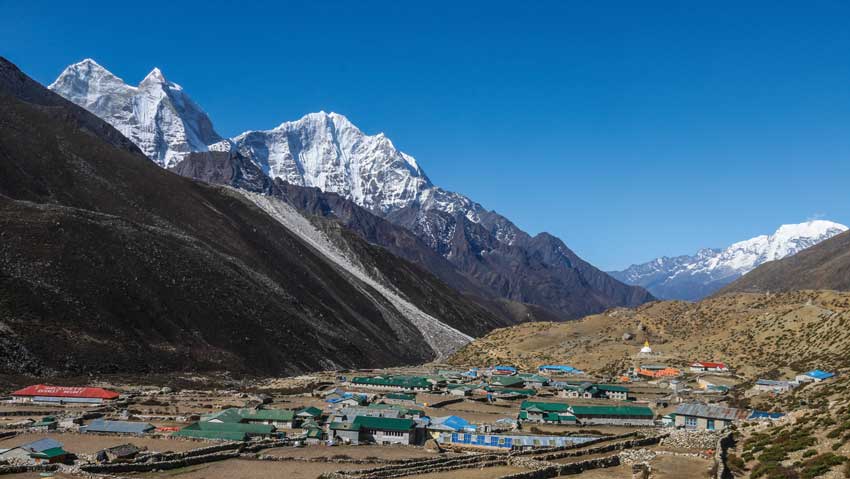Explore the Eight-Thousanders of Nepal
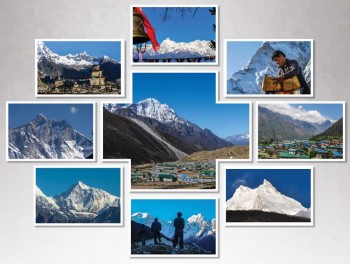
Nepal is widely known as the “Himalayan Kingdom” due to the dominance and location of the Himalayas. Among the 14 mountains in the world that are known as “Eight-thousanders” (as these mountains are 8,000 meters above sea level), 8 of them fall in Nepal. While Nepal is known for its tallest peak in the world, Mount Everest, there are seven other noteworthy peaks to talk about.

Tourism businesses claim that foreigners are hardly aware of the rest of the seven “Eight-thousanders” of Nepal. The lack of awareness exists because Nepal does not promote other mountains as much as they promote Everest to the  world. Mohan Lamsal, former president of Trekking Agencies’ Association of Nepal (TAAN) states, “I have been to more than 30 countries for tourism promotion. What I have noticed is everybody knows about Everest, but they are hardly aware of the other mountains of our country.”
world. Mohan Lamsal, former president of Trekking Agencies’ Association of Nepal (TAAN) states, “I have been to more than 30 countries for tourism promotion. What I have noticed is everybody knows about Everest, but they are hardly aware of the other mountains of our country.”
Everest
Earth’s highest mountain, Everest needs no introduction. In Nepali, Everest is called “Sagarmatha” and is situated in the Mahalangur Himal sub-range. There are two main climbing routes; one approaching the summit from the southeast in Nepal (known as the “standard route”) and the other from the north in Tibet. Tenzing Norgay and Edmund Hillary made the first official ascent of Everest in 1953.
How to Reach Everest Base Camp?
Take a 40 minutes flight to Lukla from Kathmandu. Then trek for 4 hours to Phakding. On the second day, you’ll trek from Phakding to Namche Bazaar which takes around six hours. Take a rest at Namche Bazaar. On the fourth day, trek to Tengboche. While at Tengboche, do not miss the famous Gumba / monastery of Sagarmatha region. The journey to this monastery takes around 6 hours walk. On the fifth day, head towards Dingboche which takes another 6 hours. The next day you will have to take the route to Dungla. On the eighth day, trek to Lobuche which takes around 4 hours. Even after 9 days of trekking, you still have more trekking to do. Get ready for a 6 hours long trek to Gorakshep. This is the last place that provides accommodation before trekking towards Everest. Finally, on the tenth day, you’ll be heading towards Everest Base Camp, which is only 3 hours away from Gorakshep. You will need to bring a tent to stay at Base Camp, and it might be difficult to get space as it is a popular base camp. Another suggestion is to trek towards Kala Patthar – which is the best place to get the best view of Everest.
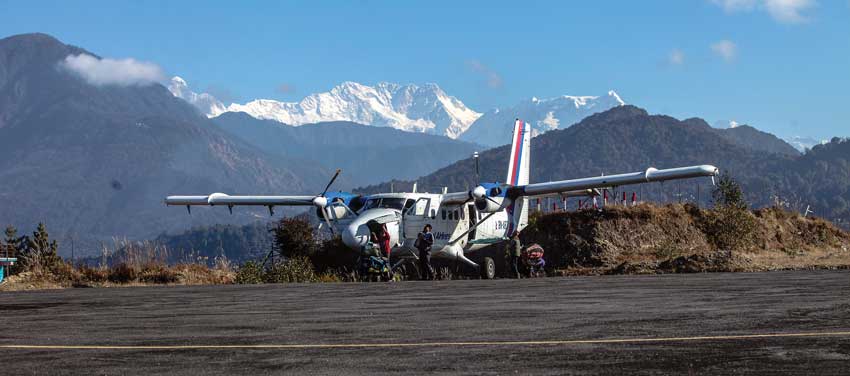
Kanchenjunga
The world’s third tallest, and Nepal’s second tallest mountain is Kanchenjunga. Situated at a height of 8,586 meters, this glorious peak is located at Taplejung District. The first ascent was by British mountaineers G. Brand and J. Brown on 25 May 1955.
How to reach Kanchenjunga Base Camp?
Fly from Kathmandu to Bhadrapur and overnight at Bhadrapur. On the second day, head towards Taplejung (2400 meters). Traveling on the road from Bhadrapur to Taplejung takes around 8 hours and accommodation facilities are easily found. On the next day, you’ll be heading towards Cheruwa and on the fourth day, head towards Sekathum. Rest well at Sekathum, and prepare for a 7 hours journey towards Gyabla. On the sixth day, travel towards Ghunsa (4,015 meters). There are chances of altitude sickness, so it’s best to rest at Ghunsa on your seventh day too. After resting, head towards Khambochen which takes around 5 hours. On the ninth day, you’ll travel to Lhonak (4792 meters). Finally, on the tenth day, you’ll reach Kanchenjunga Base Camp.

Lhotse
Lhotse is the world’s fourth highest mountain. Standing tall at 8516 meters, Lhotse is located at Solukhumbu District. The mountain was first climbed by a Swiss expedition team in 1956. Everest and Lhotse share the same base camps.
How to reach Lhotse Base Camp?
Since it shares the same base camp as Everest, follow the same directions. Then once at Kala Patthar, you’ll get the best views of a chain of mountains including Everest and Lhotse.
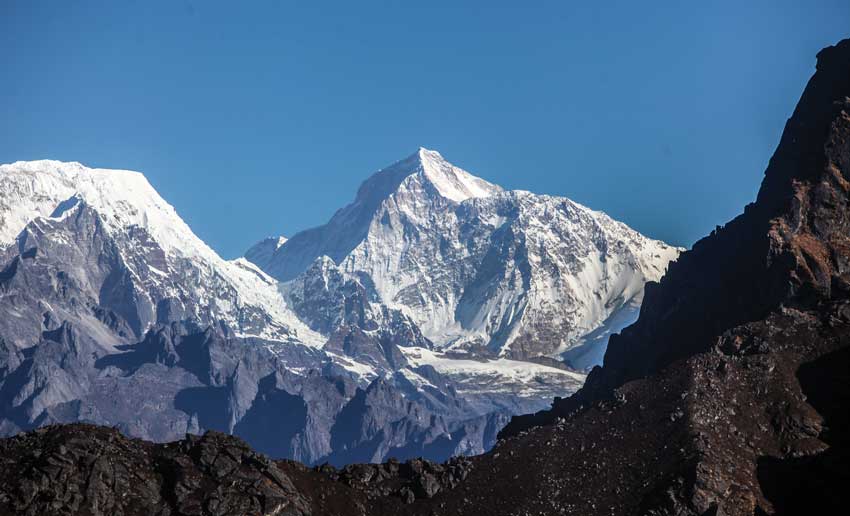
Makalu
Makalu is the fifth tallest mountain in the world. Standing tall at 8465 meters, it is located in the Sankhuwasabha District. Owing to a lack of infrastructural development around this district, many don’t travel to Makalu Base Camp. The mountain was first summited by French men J. Cozy and L. Tori in 1955.
How to reach Makalu Base Camp?
You’ll need to fly from Kathmandu to Tumlingtar. On the next day, travel by road to Chichira, which takes about 4 hours. Be prepared for a 7 hours trek to Num (1560 meters) and another 7 hours walk to reach Tashigoan the next day. On the sixth day, you’ll reach Khongma, where you’ll take a much needed rest. In the following days, trek towards Dobate, and from Dobate to Yangri Kharka, which takes up to 6 hours. On the eleventh day, you’ll reach Langmale Kharka. From here, a 7 hours trek will take you to Makalu Base Camp (4870 meters).

Cho Oyu
Cho Oyu is the sixth highest mountain in the world. At a height of 8188 meters, Cho Oyu lies in Solukhumbu District. Its first ascent was by Austrian H. Tichey alongside Nepali Pasang Dawa Lama.
How to reach Cho Oyu Base Camp?
You’ll need to fly to Lukla then start trekking to Phakding. Then from Phakding, trek to Namche Bazaar. From Namche Bazaar, it is about a 6 hours trek to Dole. You’ll have a rest at Dole and continue on the next day to Machhermo, which takes about 4 hours. From Machhermo, you’ll trek to Gokyo Valley (4790 meters) which takes 4 hours. Trekking around the lakes of Gokyo Valley brings you to Cho Oyu Base Camp.
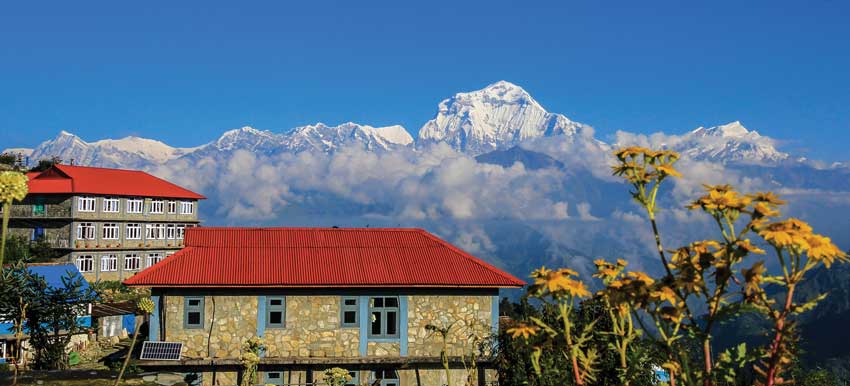
Dhaulagiri
Standing tall at a height of 8167 meters, Dhaulagiri is the seventh tallest mountain in the world. It is located in the Manang and Mustang District. The mountain’s successful ascent was done by two Swiss citizens, K. Dimbregar and A. Schelbert in 1960.
How to reach Dhaulagiri Base Camp?
You’ll need to reach Pokhara first. Travelling by road takes about 5 hours and by air takes you about 25 minutes. Once you reach Pokhara, the next stopover is Beni. On the next day, head towards Babiyachaur. On the third day, prepare for a 6 hours journey to Dharapani. Rest there for the night, and head towards Muri, which takes about 7 hours. From Muri, you’ll reach Baghara on your fifth day and head towards Dobang. It will take 5 hours for both. On the seventh day, travel towards Sallaghari and rest there. On the ninth day, head towards Italian Camp and Glacier Camp on the tenth day. Finally, you’ll reach Dhaulagiri Base Camp (5010 meters) on the eleventh day, after a 5 hours trek.

Manaslu
Manaslu is the seventh tallest mountain in the world. Standing tall at 8163 meters, it I located in Gorkha District. The first ascent of Manaslu was done by T. Imanshi and Gyaltsen Norbu.
How to reach Manaslu Base Camp?
First, you’ll need to drive from Kathmandu to Soti Khola, which takes around 9. The next day, trek for 6 hours to Machha Khola. On the third day, head towards Jagat and Deng on the fourth day. A five hours trek from Deng will take you to Namrung. From there, you’ll need to trek 4 hours to Sama Gaun (3530 meters). Finally, on the eighth day, you’ll reach Manaslu Base Camp (4460 meters) after a 5 hours trek.

Annapurna
Annapurna is the tenth tallest mountain in the world. It is one of the most prominent Himalayan peaks for mountaineering expeditions. This mountain was the first “Eight-thousanders” to be climbed by French expedition team M.Herzog and L.Lachenal on 3rd June 1950.
How to reach Annapurna Base Camp?
Start by taking a flight from Kathmandu to Pokhara followed by a 6 hours road travel to Ghandruk. On the second day, prepare for a six hours walk to Chhomrong. Take a rest here and head towards Bamboo. On the fourth day, trek for five hours to Deurali (3230 meters). After a 6 hours walk from Deurali, head towards Annapurna Base Camp (4130 meters).
The most convenient aspect of this trip is travelers can find food and accommodation services easily on each of the stop points on their way.
